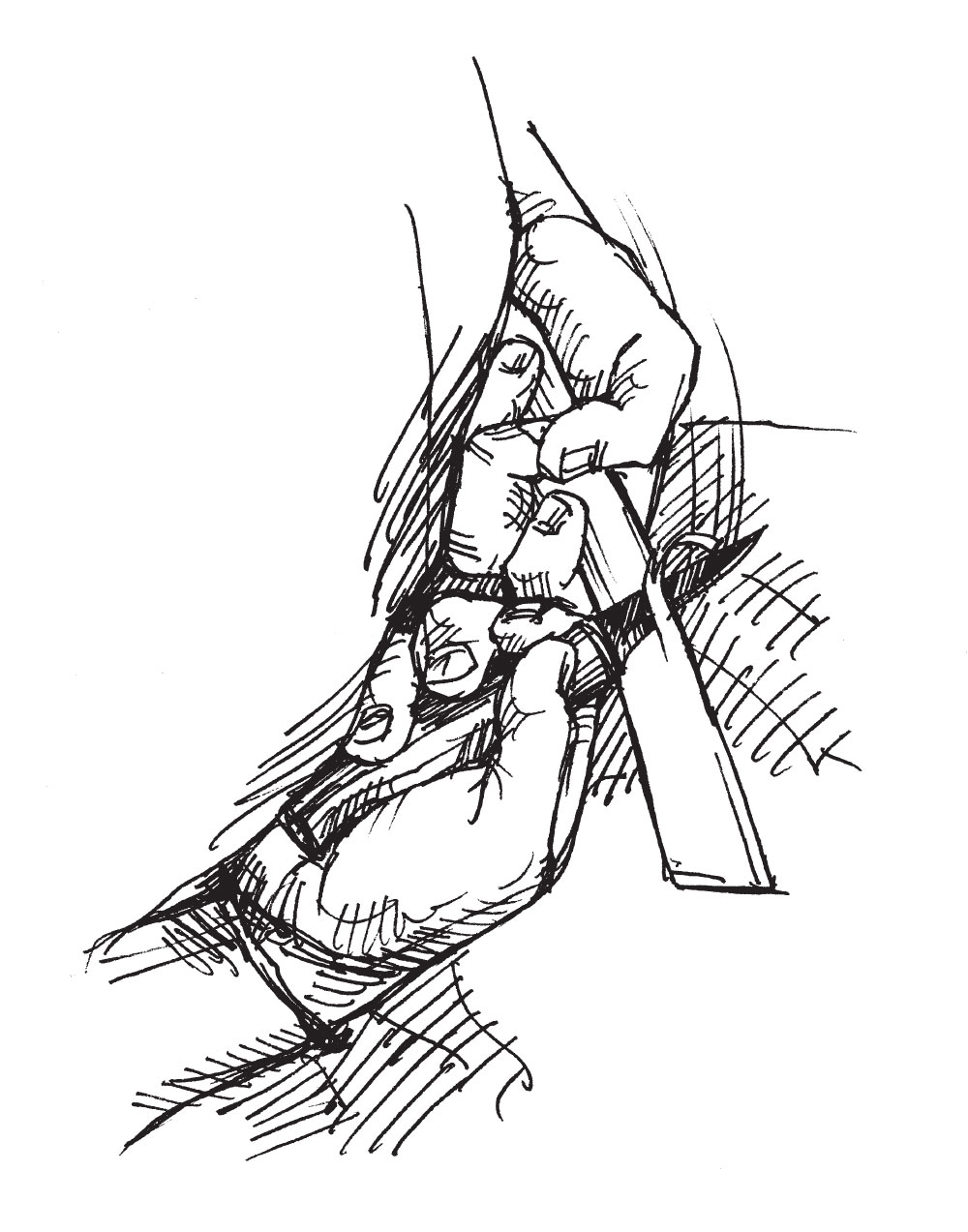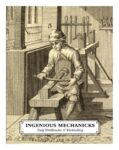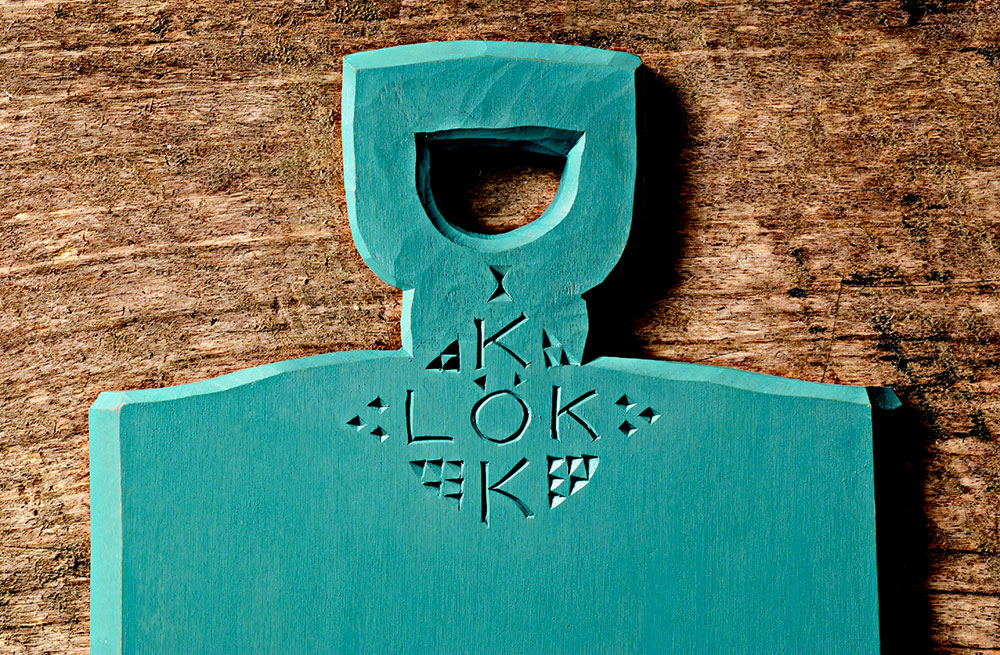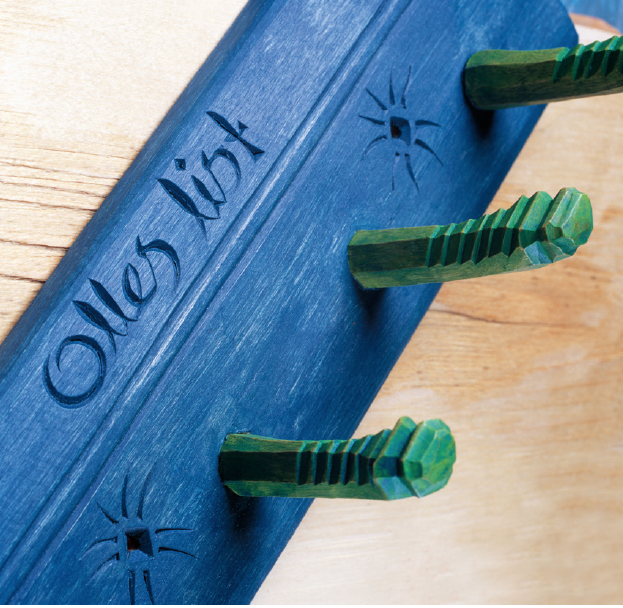
This is an excerpt from “Slöjd in Wood” by Jögge Sundqvist.
The snob stick is a long sallow (willow) stick with a knob on the end, on which the bark has been peeled off in a spiral shape. The snob holds the stick by the knob while he haughtily struts around in town. The idea comes from the woodworker Bengt Lidström in Kassjö. As a child, he would pretend he was a snob after he saw haberdashery ads in Västerbottens-Kuriren, the local newspaper. The snob stick makes a nice feature and a support for the flowers in your garden border, in the flower box or the flower pot. If you don’t have a need for snob stick, you can use it as a walking stick instead.
The curtain rod is made from a young, straight-grown birch. The knobs have holes in which are attached rod tenons. The curtain rod can be hung from brackets made from birch crooks.
Tools: Knife, brace, bit, drawknife, wooden mallet, spokeshave.
Material: Dry birch blank for knobs. Dry, straight birch, 25mm to 35mm (1″ to 1-1/2″) for rods. Thin sapling or withy from birch, sallow or hazel about 15mm (9/16″) in diameter for the stick..

SNOB
Start with the stick. Select the blank in the early summer, when the bark comes off the wood. Cut a spiral in the bark with the knife using your knee as a support. Hold the knife edge at an angle and rotate until you have scored the entire stick (see illustration below). Leave a space of around 25mm (1″) between the score lines for the next spiral cut. Score the stick again parallel to the first scoring line. Carefully peel off the bark between the cuts, leaving a spiral pattern of bark. After the withy has dried for a couple of days, carve a 20mm (13/16″) tenon on top with a smaller dimension than the stick. A diameter of 12mm (1/2″) is good.

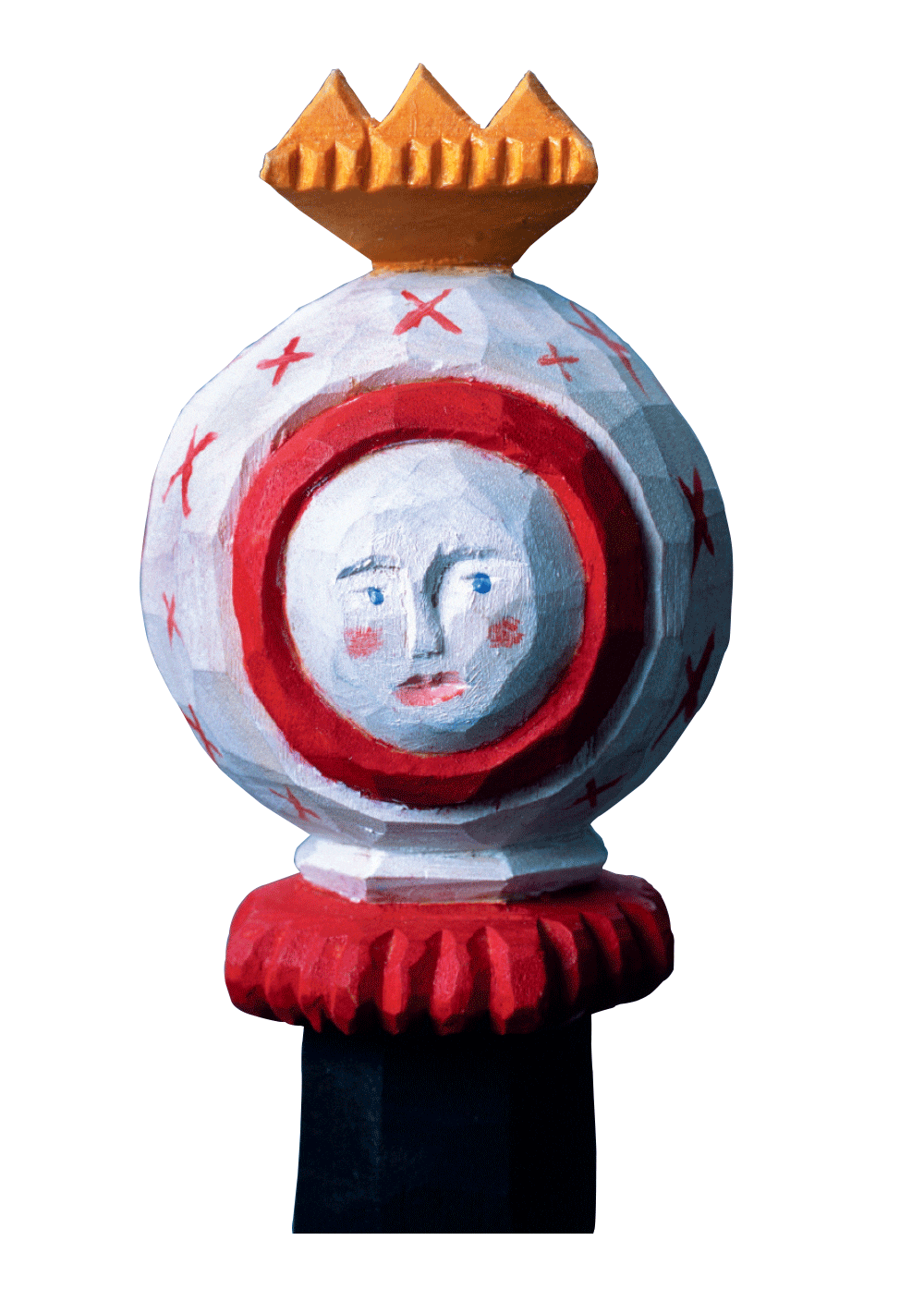
KNOB
Split out a square blank with the same diameter as the finished knob. Cut the blank so it is twice as long as the length of the knob. A total length of 15cm (5-15/16″) is about right. Now you have supporting material at one end that makes it easier to hold, either in your hand or clamped in the shaving horse. At this point, making two knobs is an option, matching the dimensions and design.
Shape the blank smooth and square in the shaving horse or with a small axe and knife. Lay out centerlines on all sides, checking that all angles are 90. including the end faces.
When making two knobs, drill a round mortise in each end with an auger bit with the same diameter as the tenon on the stick. The centerlines act as sightlines so you can align your eye with the drill as you are drilling. Lay out the form on all four sides:
Start by drawing lines that indicate depth, then saw kerfs on the four long sides. Plan the order of work to systematically split off excess material with a knife and hammer to facilitate the carving phase. For example, after the first rough split, you can saw more grooves and split closer to the final form.


When you have finished the initial square shaping, continue shaping into octagonal facets. Finally, carve the shape of the knob smooth with the knife. Go for octagonal or round shapes. For knife grips, see Knobs and Latches on pages 34 and 35.
CURTAIN ROD WITH BRACKET
Make curtain rod finials the same way as the knob of the snob stick. Use straight-grained birch, rowan or hazel for the rod. Carve it octagonal or round. For strength, it is a good idea to make the middle part of the rod a little bit thicker. Look for nice bracket blanks when you are out in the woods. Carve the brackets for the curtain rod in the same way as the coat hook. Decorate and go all in with colors and patterns!
— Meghan B.





